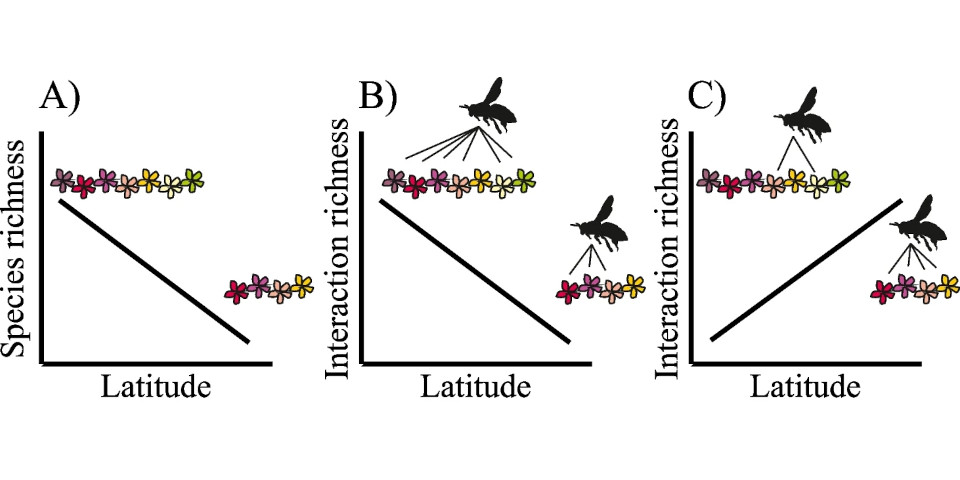Contrasting hypotheses suggest that the number of biotic interactions per species could either increase towards the equator due to the increasing richness of potential interaction partners (Neutral theory), or decrease in the tropics due to increased biotic competition (Latitudinal Biotic Interaction Hypothesis). Empirical testing of these hypotheses remains limited due to practical limitations, differences in methodology, and species turnover across latitudes. Here, we focus on a single species with a worldwide distribution, the honey bee (Apis mellifera L.), to assess how the number of different types of interactions vary across latitudes. Foraging honey bees interact with many organisms in their local environment, including plants they actively select to visit and microbes that they largely encounter passively (i.e., unintentionally and more or less randomly). Tissue pieces and spores of these organisms are carried to the hive by foraging honey bees and end up preserved within honey, providing a rich record of the species honey bees encounter in nature.
The Latitudinal Biotic Interaction Hypothesis revisited: contrasting latitudinal richness gradients in actively vs. passively accumulated interaction partners of honey bees

Author: RobertBrodschneider
http://www.bienenstand.atRB is engaged in research on the honey bee. His major research interests are: Fundamental research in physiology - metabolism - behavior - nutrition of social insects - the honey bee in particular. Since 2008 coordinator of the survey of winter losses of honey bee colonies in Austria - research on identification of associated risk factors and on colony dynamics. Since 2013 executive committee member of COLOSS (www.coloss.org). Since 2014 Co-chair of the international Colony losses monitoring group of COLOSS - together with Alison Gray. Experience in citizen science projects: C.S.I. Pollen - Citizen scientist investigation on pollen diversity forage available to honey bees. An international study coordinated by Sjef van der Steen and Robert Brodschneider. Member of the Citizen Science Association (http://citizenscienceassociation.org). Editor of Bee World (https://www.tandfonline.com/toc/tbee20/current).






